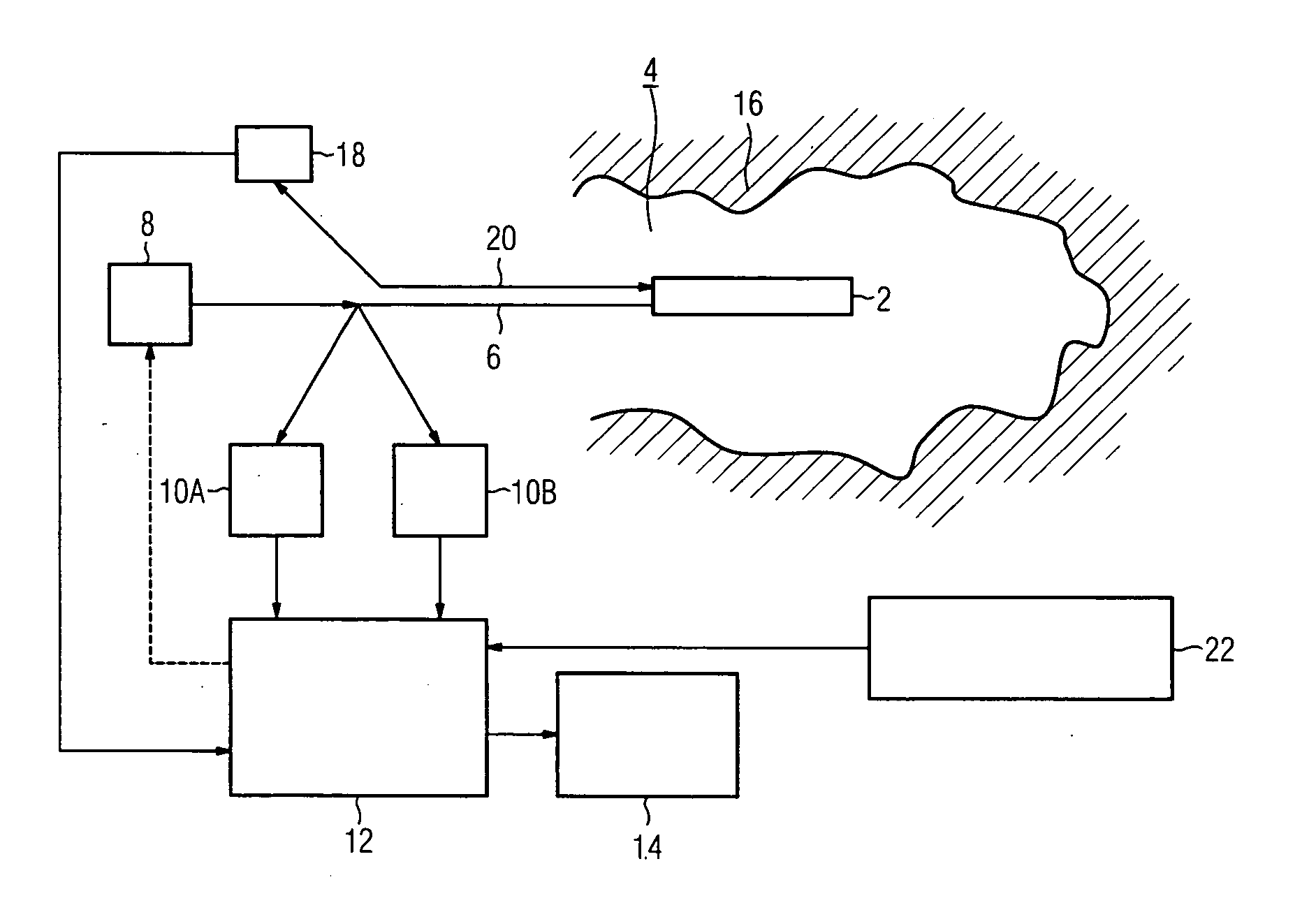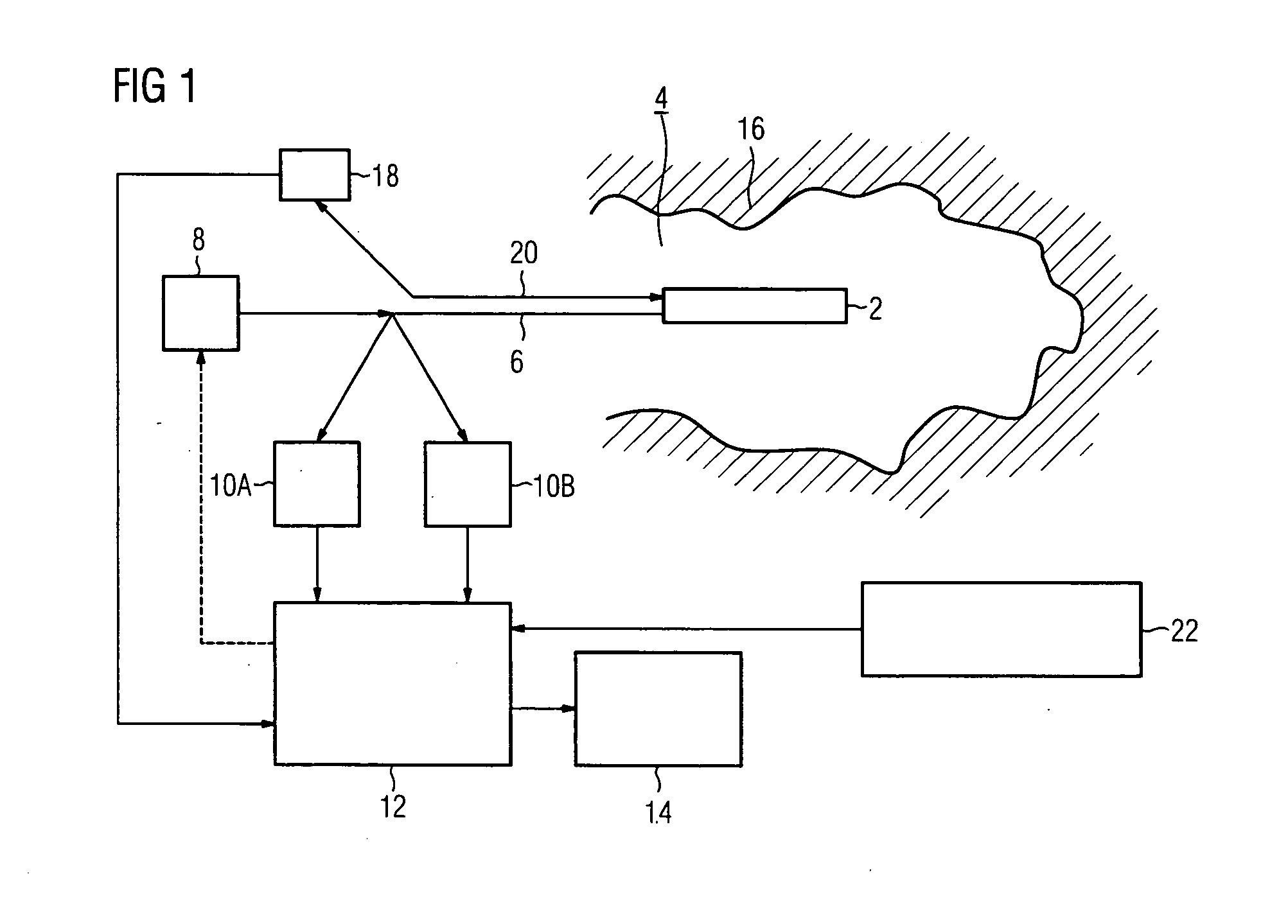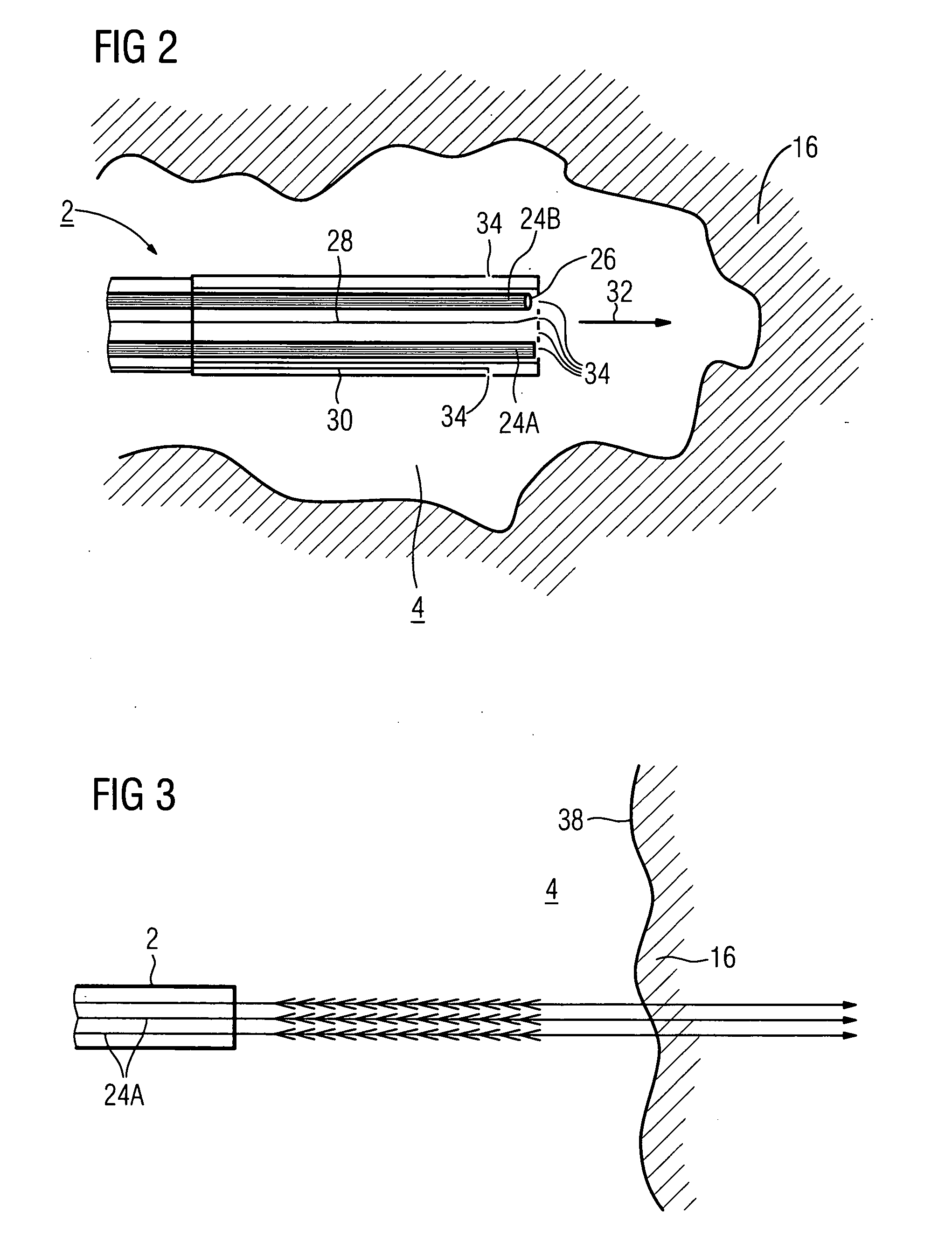Method for medical imaging and a medical imaging system
- Summary
- Abstract
- Description
- Claims
- Application Information
AI Technical Summary
Benefits of technology
Problems solved by technology
Method used
Image
Examples
Embodiment Construction
[0031] A medical imaging system shown in FIG. 1 has a catheter 2 that during the examination is inserted into the vessel to be examined 4 of a human body. The catheter 2 is connected via an optical fiber cable 6 to a supply unit 8. Infrared light is supplied to the optical fiber cable 6 via this supply unit. The supply unit 8 is designed so that it can supply infrared light both in the 1300 nm wavelength range and also approximately in the 1800 nm wavelength range.
[0032] The imaging system also includes a first reception and evaluation unit 10A, that is designed for imaging using the optical coherence tomography (OCT) imaging method. Furthermore, the system has a second reception and evaluation unit 10B, that is designed as an infrared camera for radio-optic imaging. The evaluation units process received light signals to obtain image information that is transmitted to a central computer unit 12. In the computer unit 12, this image information is further processed and displayed for ...
PUM
 Login to View More
Login to View More Abstract
Description
Claims
Application Information
 Login to View More
Login to View More - R&D Engineer
- R&D Manager
- IP Professional
- Industry Leading Data Capabilities
- Powerful AI technology
- Patent DNA Extraction
Browse by: Latest US Patents, China's latest patents, Technical Efficacy Thesaurus, Application Domain, Technology Topic, Popular Technical Reports.
© 2024 PatSnap. All rights reserved.Legal|Privacy policy|Modern Slavery Act Transparency Statement|Sitemap|About US| Contact US: help@patsnap.com










